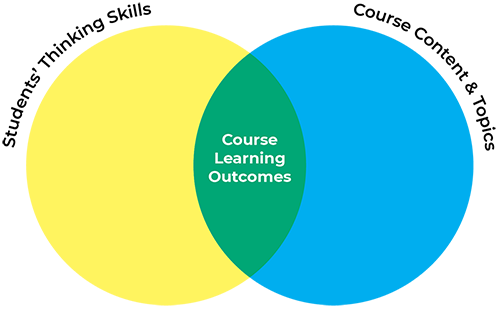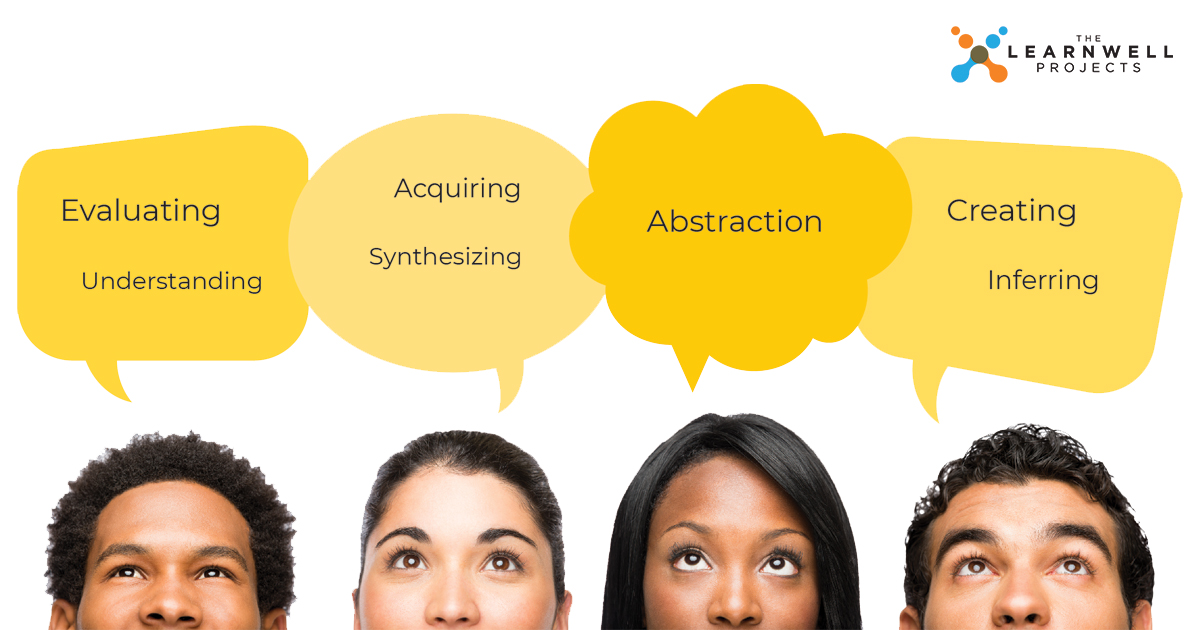Click on the clip to view the full video on YouTube.
In other words, the primary colors yellow and blue must be combined to produce the secondary color green.
The yellow represents the modes of thinking students must enact on content while doing academic work to produce the green course learning outcomes.
This is especially challenging for students because professors are not clear about the types of thinking they want. So students must infer this information from vague appeals to “think critically,” and not all syllabi provide guidance.
Producing the proper shade of yellow is most challenging because professors are content experts and thought leaders, not metacognition experts. They lack the requisite metacognitive skills and language to effectively communicate their desires. So they can only offer limited insight into the thinking skills they want students to use.
They may say, “I want you to think critically.” But simply telling students to think critically is insufficient. Here you see a set of course outcomes that may appear in a chemistry course syllabus.
Chemistry Course Outcomes
At the conclusion of this course, students should be able to:
- Name the organic compounds using systematic nomenclature methodology.
- Compare and rank molecules according to their relative physical and chemical properties.
- Draw accurate structural representations of organic molecules.
- Predict the outcomes of organic chemical reactions.
- Relate principles of chemical reactions and mechanisms to organic functional groups.
- Propose reaction mechanisms for common organic chemistry reactions.
- Plan the synthesis of organic compounds utilizing the specific reactions of functional groups.
- Demonstrate basic laboratory techniques used in organic chemistry.
This information is often missed or glossed over by students. Yet it can provide key clues to help students discover the knowledge products they must produce.
Below are a few things you will want to emphasize to students:
- Notice the quantitative difference. There are only eight course outcomes compared to the seemingly endless stream of course topics and content shown in part 2 of the Go for Green article series.
- Notice the qualitative difference. The course outcomes are more specific and action-oriented than the topics or content.
- Notice the thinking skills in yellow font. These cognitive clues provide direction for students about the thinking skills they must use on the content and topics to produce the course learning outcomes.
The key insight of the Go for Green method is that students must combine the content and topics with specific thinking skills to produce each respective learning outcome. Engaging in this type of constructive learning is an indispensable skill for students that transforms them into independent learners.
As we pan out and look at the three key elements of a course—the topics, content, and learning outcomes—remember that even though green is what students must produce, it is a secondary color that can only be created by blending the primary colors of yellow and blue.

Yellow symbolizes the sun, representing energy and intellect. Interestingly, yellow is also the most attractive color to the human eye. In academics, yellow represents the thinking skills that students enact on content. These modes of thinking provide action and energy to the content, enabling students to transform course information into whatever outcome they desire or that is needed.
And finally, green symbolizes growth and fertility, just as students’ abilities to produce the course outcomes is evidence of fertile minds and academic growth. So remember that just as yellow and blue must work together to create a green, students must use their thinking skills on content to produce the course outcomes.



0 Comments